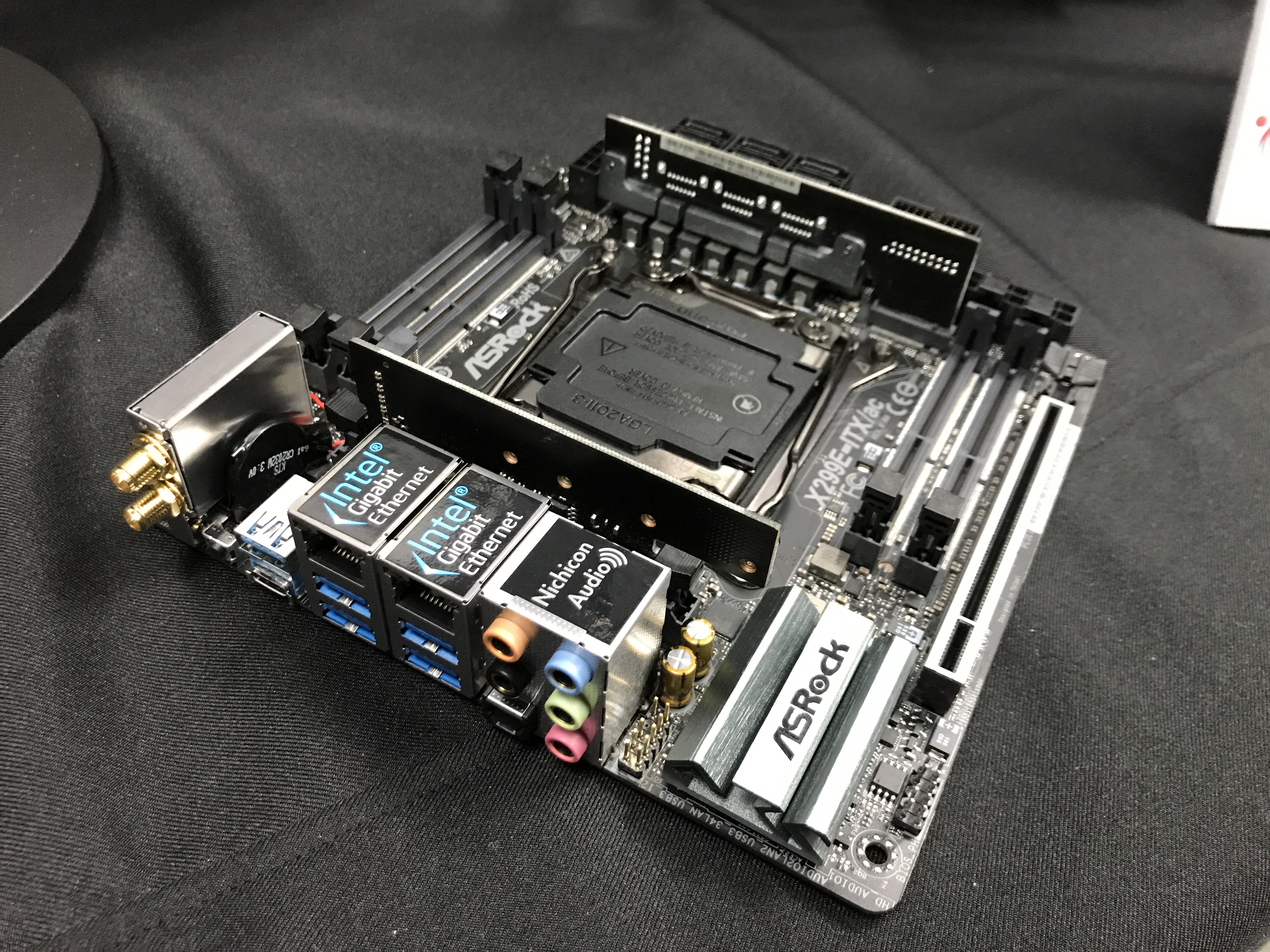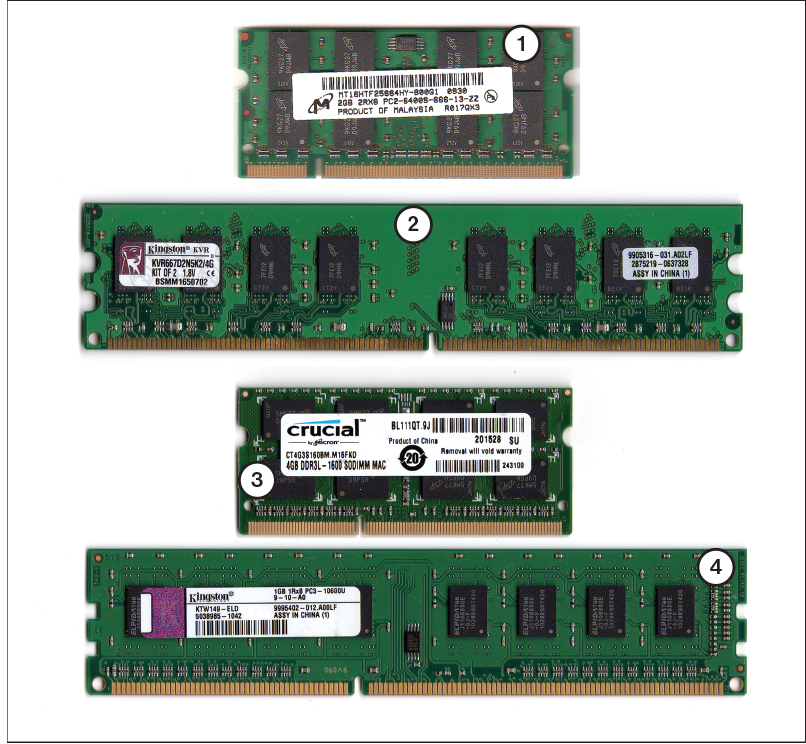Two Sodimm Slots
Posted By admin On 28/07/22
|
| |||||||||||||||||||
| ||||||||||||||||||||
Two Sodimm Slots Support Up To 8gb
That’s two 1GB DIMMs in two slots and two 512MB DIMMs in the other two slots. Yes, you may end up throwing away memory to upgrade. If your PC is configured with 1GB of memory using 4 256 MB DIMMs and you want 2GB of memory total, you have to throw away all the 256MB DIMMs and replace them with a combination of DIMMs. If only two of the blue memory slots are populated with matched DIMMs, dual-channel mode is enabled. Quad-channel mode This mode is enabled when four (or a multiple of four) DIMMs are identical in capacity and speed, and are put in quad-channel slots. When two memory modules are installed, the system operates in dual-channel mode. Slots Two SODIMM slots Type Dual-channel DDR4 Speed Up to 2133 MHz Configurations supported 4 GB, 6 GB, 8 GB, 12 GB, and 16 GB. 0 Kudos Dell Support Resources. Two SODIMM slots supporting dual-channel memory 1024MB, 2048MB and 4096MB SODIMMs. Upgradeable to 8GB with 4GB SODIMMs in slots 1 and 2.
16 GB SO-DIMM modules are now starting to become generally available from multiple vendors, which eases RAM constraints in devices that have a limited number of slots for RAM modules.
Two Sodimm Slots Download
A SO-DIMM, SODIMM, or small outline dual in-line memory module, is a type of computer memory built using integrated circuits. SO-DIMMs are a smaller alternative to a DIMM, being roughly half the size of regular DIMMs.
SO-DIMMs are often used in systems that have limited space, which include laptops, notebooks, small-footprint personal computers such as those based on Mini-ITXmotherboards, high-end upgradable office printers, and networking hardware such as routers and NAS devices.[2]
Visual identification[edit]

Most types of SO-DIMMs can be recognized visually by the distinctive notches that 'key' them for different applications:[1]

- 100-pin SO-DIMMs (SDR SDRAM) have two notches.[3]
- 144-pin SO-DIMMs (SDR SDRAM) have a single notch near the center.[4]
- 200-pin SO-DIMMs (DDR SDRAM or DDR2 SDRAM) have a single notch nearer to one side.[5] The exact location of this notch varies (read below).
- 204-pin SO-DIMMs (DDR3 SDRAM) have a single notch closer to the center than on 200-pin SO-DIMMs.[6]
- 260-pin SO-DIMMs (DDR4 SDRAM), 69.6 mm (2.74 inches) wide and 30 mm (1.2 inches) high, making them 2 mm (0.079 inches) wider than DDR3 SO-DIMMs, with a single notch after pin 144.[7]
- 260-pin SO-DIMMs (UniDIMM), 69.6 mm (2.74 inches) wide and 30 mm (1.2 inches) or 20 mm (0.79 inches) high, with a single notch placed differently than on DDR3 SO-DIMMs.[8][9]
Variants of 200-pin SO-DIMMs[edit]
The 200-pin SO-DIMM can be of the types DDR and DDR2. In both cases the notch is located at one fifth of the board length (20 pins + notch + 80 pins), but in DDR2 the notch is located slightly closer to the center of the board. These two types of memory are not interchangeable. The different notch locations are designed to prevent cross-installation, aiding at the same time in visually identifying 200-pin SO-DIMM modules.[1]
This variance is designed to prevent coupling of memory and controllers of different DDR generations due to electrical incompatibility. DDR SO-DIMMs operate at 2.5 V while DDR2 SO-DIMMs operate at 1.8 V.[10]
Variants of DDR3 SO-DIMMs[edit]
These modules, while using the same physical layout, may differ in the specified voltage – 1.5 or 1.35 volts. The lower voltage modules are sometimes, but not always, identified as DDR3L – see also DDR3 SDRAM.
General characteristics[edit]
200-pin and 204-pin SO-DIMMs are 67.6 mm (2.66 inches) long, 31.75 mm (1.250 inches) wide, having a maximum total depth of 3.8 mm (0.15 inches).[11]
SO-DIMMs are nearly equal in power and voltage rating to DIMMs; SO-DIMM technology does not mean lower performance compared to larger DIMMs. For example, DDR3 SO-DIMMs provide clock speeds such as 533 MHz (1066 MT/s, PC3-8500), CAS latencies such as 7, and higher capacities such as 4 GB per module.[12]
DDR2 SO-DIMM memory modules commonly have clock speeds from 200 MHz upward (specifications). 204-pin SO-DIMMs can also contain DDR3 SDRAM, with specifications such as PC3-6400, PC3-8500, PC3-10600, PC3-14900 and PC3-17000.[13] 260-pin UniDIMMs contain DDR3 or DDR4 SDRAM depending on configuration. Some SO-DIMMs provide ECC functionality; unbuffered ECC SO-DIMMs are called SO-CDIMMs.[14]
See also[edit]

- Dual in-line package (DIP)
- Memory geometry – logical configuration of RAM modules (channels, ranks, banks, etc.)
- Rambus in-line memory module (RIMM)
- Single in-line memory module (SIMM)
- Single in-line package (SIP)
- Zig-zag in-line package (ZIP)
Two Sodimm Slots Casino
References[edit]
- ^ abc'Are DDR, DDR2 and DDR3 SO-DIMM memory modules interchangeable?'. acer.custhelp.com. Retrieved 2015-06-26.
- ^Synology Inc. 'Synology RAM Module'. synology.com.
- ^'RAMCHECK 100-Pin DDR Adapter, a tool for testing and identifying JEDEC-compliant 100-pin DDR SO-DIMM modules'. memorytesters.com. 2013. Retrieved 2015-06-26.
- ^'Small-outline SDRAM module (MT16LSDF3264(L)H 256 MB and MT16LSDF6464(L)H 512 MB) Datasheet'(PDF). Micron Technology. 2006-05-03. p. 22. Retrieved 2015-06-26.
- ^'DDR DIMM & SODIMM Modules (184-pin DDR DIMM, 100-pin DDR DIMM, and 200-pin DDR SO-DIMM modules)'(PDF). smartm.com. 2011. p. 4. Retrieved 2015-06-26.
- ^'NT2GC64B(C)H4B0PS / NT4GC64B(C)88B0(1)NS / NT8GC64B(C)8HB0NS PC3(L)-10600 / PC3(L)-12800 Unbuffered DDR3 SO-DIMM'(PDF). nanya.com. December 2012. p. 23. Retrieved 2015-06-26.
- ^'DDR4 SDRAM SO-DIMM (MTA18ASF1G72HZ, 8 GB) Datasheet'(PDF). Micron Technology. 2014-09-10. p. 18. Archived from the original(PDF) on 2014-11-29. Retrieved 2015-06-26.
- ^Geof Findley; Becky Loop (2014-09-16). 'DDR4: The Right Memory for Your Next Server and High-End Desktop System'(PDF). intel.activeevents.com. Intel. p. 28. Archived from the original(PDF) on 2014-12-17. Retrieved 2015-06-26.
- ^'How Intel Plans to Transition Between DDR3 and DDR4 for the Mainstream'. techpowerup.com. 2014-09-14. Retrieved 2015-06-26.
- ^'DRAM – Can I mix DDR, DDR2 and DDR3 modules-my PC?'. integralmemory.com. Retrieved 2015-06-26.
- ^micron.com - 200 Pin, PC2700 DDR SDRAM Unbuffered SO–DIMM REFERENCE DESIGN SPECIFICATIONArchived 2010-09-23 at the Wayback Machine page 26
- ^'Corsair Memory – 4GB DDR3 SODIMM Memory (CM3X4GSD1066)'. corsair.com. Retrieved 1 October 2015.
- ^'204-Pin DDR3 SDRAM Unbuffered SODIMM Design Specification'.
- ^'Define-SO-CDIMM'. RAMpedia. Retrieved 2014-08-24.
External links[edit]
| Wikimedia Commons has media related to SO-DIMM. |

- Ruggedizing RAM for industrial systems (XR-DIMM form factor)
